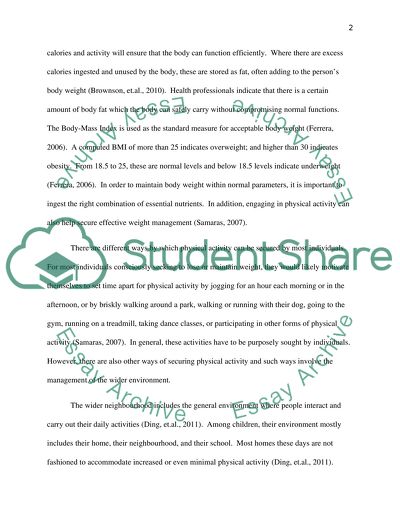Cite this document
(“Physical Activity and the Wider Environment Essay”, n.d.)
Physical Activity and the Wider Environment Essay. Retrieved from https://studentshare.org/environmental-studies/1612352-physical-activity-and-the-wider-environment
Physical Activity and the Wider Environment Essay. Retrieved from https://studentshare.org/environmental-studies/1612352-physical-activity-and-the-wider-environment
(Physical Activity and the Wider Environment Essay)
Physical Activity and the Wider Environment Essay. https://studentshare.org/environmental-studies/1612352-physical-activity-and-the-wider-environment.
Physical Activity and the Wider Environment Essay. https://studentshare.org/environmental-studies/1612352-physical-activity-and-the-wider-environment.
“Physical Activity and the Wider Environment Essay”, n.d. https://studentshare.org/environmental-studies/1612352-physical-activity-and-the-wider-environment.


